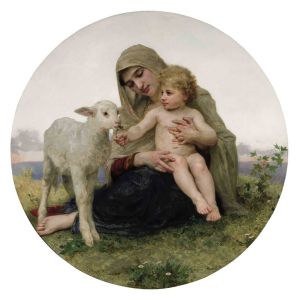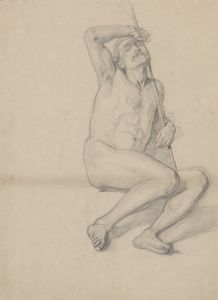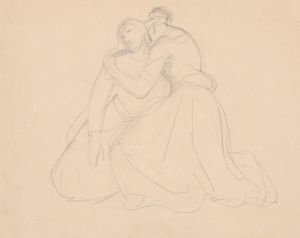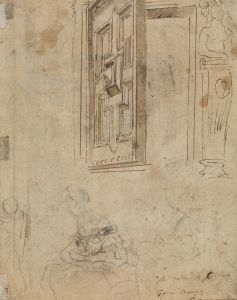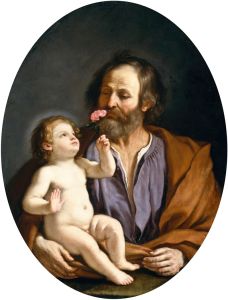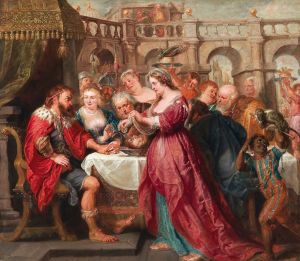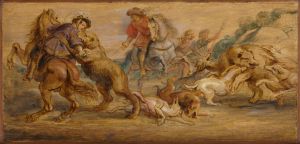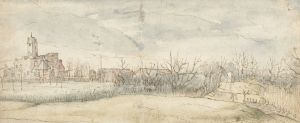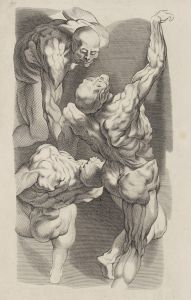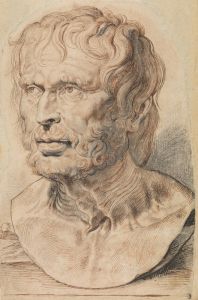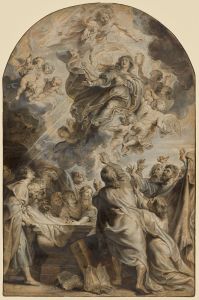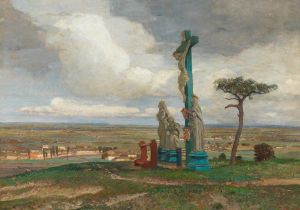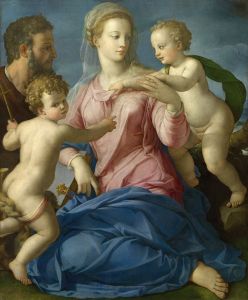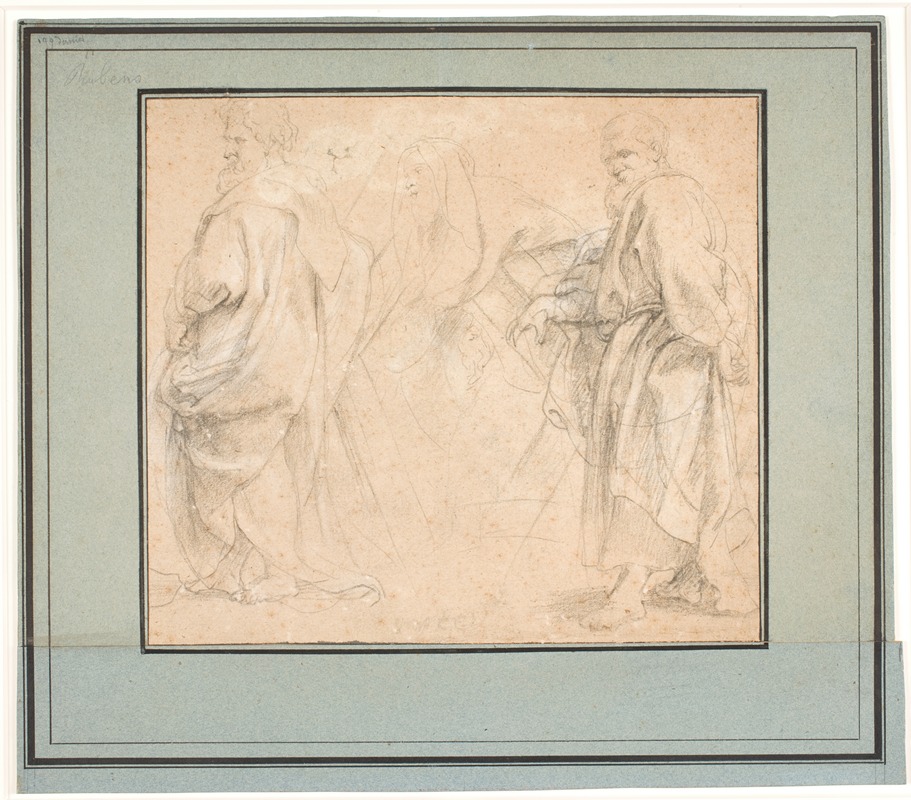
Two drafts for the Apostle Andrew and a study for Melchizedek
A hand-painted replica of Peter Paul Rubens’s masterpiece Two drafts for the Apostle Andrew and a study for Melchizedek, meticulously crafted by professional artists to capture the true essence of the original. Each piece is created with museum-quality canvas and rare mineral pigments, carefully painted by experienced artists with delicate brushstrokes and rich, layered colors to perfectly recreate the texture of the original artwork. Unlike machine-printed reproductions, this hand-painted version brings the painting to life, infused with the artist’s emotions and skill in every stroke. Whether for personal collection or home decoration, it instantly elevates the artistic atmosphere of any space.
"Two drafts for the Apostle Andrew and a study for Melchizedek" is a work attributed to the renowned Flemish Baroque painter Peter Paul Rubens. Rubens, who lived from 1577 to 1640, is celebrated for his dynamic compositions, vibrant color palette, and dramatic use of light and shadow. His works often depict religious and mythological subjects, reflecting the Counter-Reformation's emphasis on art as a means of inspiring faith.
This particular piece, "Two drafts for the Apostle Andrew and a study for Melchizedek," showcases Rubens' skill in preparatory studies, which were an essential part of his creative process. These studies allowed Rubens to explore composition, form, and expression before executing a final painting. The work includes two drafts focusing on the Apostle Andrew, one of the twelve apostles of Jesus, known for his missionary work and martyrdom. Andrew is often depicted in art holding a cross, an allusion to his crucifixion.
The study for Melchizedek, on the other hand, reflects Rubens' interest in biblical figures and themes. Melchizedek is a somewhat enigmatic figure from the Old Testament, described as the king of Salem and a priest of the Most High God. He is best known for blessing Abraham and offering him bread and wine, which has been interpreted as a prefiguration of the Eucharist in Christian theology.
Rubens' preparatory works are characterized by their fluid lines and expressive forms, capturing the essence of the figures with remarkable economy and energy. These drafts would have been part of Rubens' broader process of developing large-scale altarpieces or religious commissions, which were in high demand during his lifetime. His ability to convey complex theological concepts through vivid imagery made him a favorite among patrons of the Catholic Church.
The significance of these drafts lies not only in their artistic merit but also in their insight into Rubens' working methods. They reveal how he conceptualized and refined his ideas, balancing anatomical accuracy with emotional intensity. This approach was instrumental in achieving the dramatic impact for which his finished works are renowned.
Rubens' influence extended beyond his own time, impacting generations of artists who admired his mastery of color, composition, and narrative. His studies, such as "Two drafts for the Apostle Andrew and a study for Melchizedek," continue to be valued for their contribution to understanding the Baroque period's artistic practices.
While specific details about the provenance or current location of this particular work may not be widely documented, it remains an important example of Rubens' preparatory process and his engagement with religious themes. As with many of Rubens' studies, it offers a glimpse into the mind of one of history's most accomplished painters, whose legacy endures in the rich tradition of Western art.





